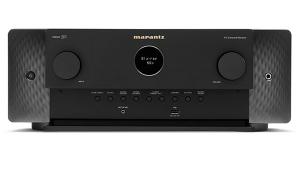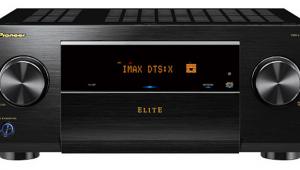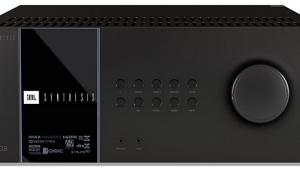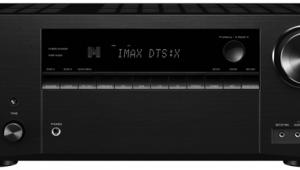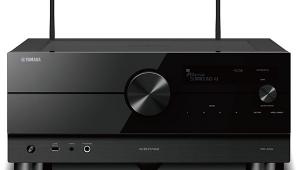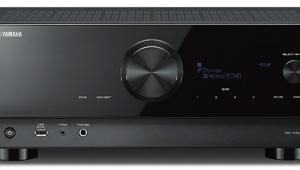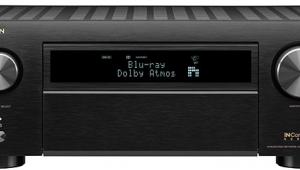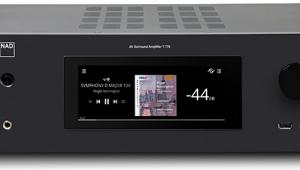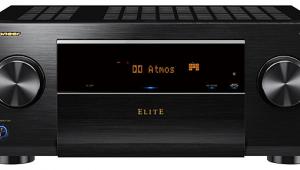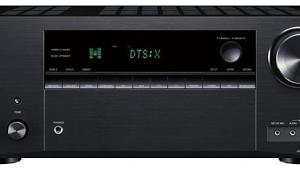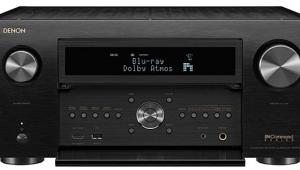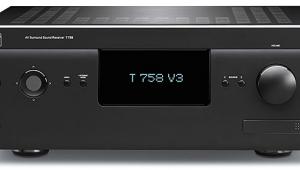Yamaha Aventage RX-A2070 A/V Receiver Review Page 2
 Loading up Underworld: Blood Wars, I ran through an hour’s worth of highlights. (That was about all I could take. Reference-quality sound, to be sure—but honestly, who watches this stuff?) The countless scenes of portentous dialogue in dark, echoing vaults were reproduced with thrilling dimension, which featured arching, overhead reverberant altitude and crystalline clarity. And the equally numerous instances of gore splattering up, down, and sideways did just that—maybe not the most artistic employment of Atmos, but certainly effective.
Loading up Underworld: Blood Wars, I ran through an hour’s worth of highlights. (That was about all I could take. Reference-quality sound, to be sure—but honestly, who watches this stuff?) The countless scenes of portentous dialogue in dark, echoing vaults were reproduced with thrilling dimension, which featured arching, overhead reverberant altitude and crystalline clarity. And the equally numerous instances of gore splattering up, down, and sideways did just that—maybe not the most artistic employment of Atmos, but certainly effective.
Yamaha’s digital signal processing includes setup options to create virtual surround-back and frontpresence speakers. I experimented with this, mostly to confirm that the conjuring didn’t impose any timbre shift or phasiness to center- or main-channel sound. But I can’t leave the “sounds like” section without touching on the company’s DSP prowess with music (and movie) sound, which here falls under the somewhat cumbersome rubric of Enhanced Cinema DSP HD3.
For well over a quarter-century now, Yamaha has led the way in DSP overlays for surround sound, and with each generation has come greater processing power and thus greater sonic capability and refinement. The RX-A2070 presumably incorporates the company’s best art at the current moment. Usually, I gloss over A/V receivers’ extra (non-Dolby, -DTS, or -Auro) listening modes with damnably faint praise (if any). But the best of the big Yammie’s modes—Chamber, Hall in Vienna, and Bottom Line, to name three—can add legitimate sonic value to many a recording, even auditioned by critical ears. Thankfully, Yamaha provides considerable fine-tuning control over DSP effect levels and delays. Though, even at its defaults, the Chamber mode—applied to a DSD of contemporary-classical brass-quintet and piano music—was altogether hair-raising. Reverb was grainless and deep but at the same time subtle. Dimensionality, including stage depth and height, was perfectly convincing. Together, they truly begged the “liveor-Memorex” question.
In short, classical and acousticjazz listeners, at the very least, owe themselves an audition. I found the movie/video-targeted modes, such as Sci-Fi and Adventure, to be less compelling. But I couldn’t promise never to use, say, Sports for a football game; the enhanced immersion was pretty cool.
Extras and Ergos
The RX-A2070 has enough notable features to swamp three reviews of this length, so I can hit only the most salient. First and most important, the human-factors front: The remote control’s field of buttons is dense but usable, though regrettably lacking key illumination. With so many functions and features—and they are all but numberless—menu-driven onscreen access is the only practicable solution. Fortunately, the pop-up menus and screens are near-instant, logical, and mostly self-prompting, though I didn’t like having to scroll laterally through as many as 30 listening modes, DSP and non, to reach the one I wanted. Presumably, neither did Yamaha, for they endowed the receiver with their long-running Scene memory system. This lets you group most parameters—listening mode, input and output selections, tone and YPAO settings, volume, and even speakersetup pattern—into 12 memories, summoned by a single key press. Or they can be linked automatically to an input for hands-off recall.
One of the receiver’s marquee features is MusicCast, Yamaha’s multiroom ecosystem. To initiate me into its wonders, the company sent along a small (but reasonably listenable) networked powered speaker, the WX-010. I dutifully downloaded the MusicCast app to my iPhone, and I had no trouble establishing a tworoom setup, with the WX-010 in the kitchen and the RX-A2070 itself taking Room 1 duty. Operations, via the MusicCast app on my smartphone, turned out to be almost perfectly intuitive, and network ops proceeded smoothly and glitch-free, which hasn’t been the case with every networked-multiroom system I’ve tried.
Whether via MusicCast or directly from its own hardware, the RX-A2070 offers baked-in access to popular services, including Pandora, Spotify, and Tidal. But for my listening habits, the Yamaha’s own streaming-audio client was the quiet star. Whether playing subscription-free internet radio or pulling tracks from my iMac-based music server via TwonkyMedia DLNA software, this proved fast—among the fastest clients I’ve used—and responsive. Yamaha’s interface includes onscreen buttons to scroll up/down through lists by one page or 10 pages, a real boon for large libraries.
Of course, Bluetooth, Apple AirPlay, and plugin iPod and USB playback are all on board; all worked as expected. (The receiver can also function as a Bluetooth source, linking to wireless headphones or speakers.) There are iOS and Android control apps; the iOS one, at least, is intelligently conceived and highly usable. And the RX-A2070 even incorporates its own control server: Type its IP address into any browser, and up pops a screen delivering full control of main and remote rooms, along with source and playback info. I think that, accessed via a tablet at my listening chair, this would quickly become my preferred controller.
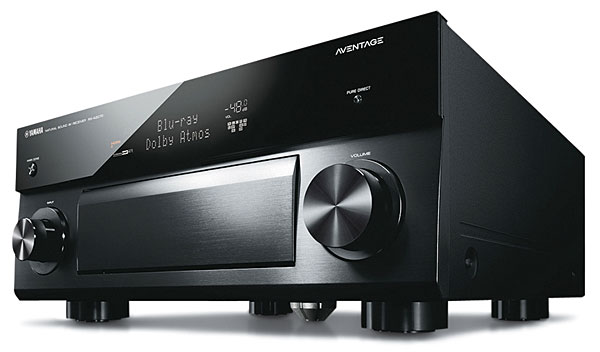
Speaking of multiroom, the receiver’s wired facilities are impressive as well. The second HDMI output can serve HD video and audio to a remote room—and thanks to the unit’s extra set of binding posts (11 in all for nine amp channels), context-sensitive power routing to up to two additional stereo zones can be enabled without changing speaker hookups. A nine-channel main system can be switched to power 7.1 in the main room and a stereo pair in a wired Zone 2 or Zone 3. Or, for example, a 7.1 main system with a wired stereo Zone 2 via the Z2 RCA outputs and an ancillary amp can be switched to activate both Zone 2 and Zone 3 with 5.1 in the main room. There’s even a line-level-only Zone 4 option via HDMI.
Lastly, at least for this report, the RX-A2070 includes 4K/60 video processing, so lower-res sources can be scaled up. (Of course, so does your 4K display, by definition, which is why more and more AVR designs are beginning to eschew the cost and complication of onboard video processing.) This carries with it a full suite of video adjustments, settable and storable under the Scene memory scheme. And naturally, the receiver is HDR-ready, including Dolby Vision passthrough via a promised firmware update. (Still in my pre-HDR period, I could not verify these features.)
I never heard anything but excellent sound, regardless of mode, from Yamaha’s RX-A2070, and that alone is enough to garner a musthear recommendation. Add in the stunning music DSP, the excessively flexible multiroom capability, and all the rest, and the conclusion is obvious: This is a top-rank A/V receiver that’s going to fit a lot of bills to a T. Or a Y.
